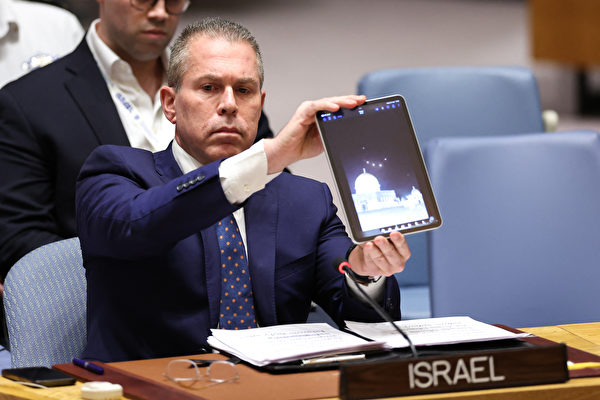On April 13, local time, Iran deployed hundreds of drones and launched missiles to attack Israel, citing retaliation against the suspected Israeli Defense Forces’ airstrike near the Iranian consulate in Damascus at the beginning of the month. This airstrike marked Iran’s first direct military attack on Israel, pushing the Middle East situation to the brink of regional war.
After the incident, it quickly became a focal point for the international community. Based on various sources of information, there are four key points to consider about this attack.
Following the attack, Iranian official media claimed that about half of the missiles and drones successfully hit their targets, while the Israeli side stated that most of the missiles and drones were intercepted by their own Iron Dome system and allied forces.
According to Voice of America, the Israeli military stated that Iran’s attack was “defeated,” with 99% of the drones and missiles intercepted by Israel’s multi-layered air defense system.
Israeli military spokesperson Major General Daniel Hagari declared in a televised statement on Sunday that this outcome was a “significant strategic success.”
Hagari mentioned that Iran launched 170 drones, over 30 cruise missiles, and more than 120 ballistic missiles, with none of the drones and cruise missiles entering Israeli territory, and “only a few” ballistic missiles falling inside. One missile caused minor damage to the Nevatim airbase in the south, with no injuries reported, and the base is “still operational.”
Additionally, according to the Israeli emergency medical organization Magen David Adom, a 7-year-old child in southern Israel was injured and hospitalized as a result of the attack.
Iranian Foreign Minister Hossein Amirabdollahian stated on the 14th that Tehran had sent a 72-hour notice to neighboring countries and the United States before attacking Israel to avoid significant casualties and damage.
The Turkish Foreign Ministry mentioned that communication had been made with Washington and Tehran before the attack through intermediaries to ensure a proportionate response, indicating that the subsequent developments were not unexpected.
However, a senior official from the Biden administration denied Iran’s foreign minister’s statement, explaining that the U.S. had to contact Iran through Switzerland and did not receive a 72-hour notice.
The official refuted Iran’s claims, stating that there was no pre-warning or indication for evacuation before the attack, suggesting that Iran’s announcement of prior notice was to mask the attack’s failure.
The official highlighted that the U.S. received information from Iran after the attack had commenced, indicating Iran’s intent to cause “significant damage,” speculating that Iran’s mention of prior notice was to disguise the attack’s failure.
Though touted as the leading anti-U.S. and anti-Israel figure in the Middle East, this latest flare-up is unlikely to lead to a full-scale war.
This is due to Iran’s weak economic foundations, a large struggling population near the poverty line heavily reliant on government subsidies.
In previous years, Iran’s excessive support for groups like the Houthi rebels in Yemen, Hamas, and Hezbollah has sparked frequent protests within its borders. Engaging in direct conflicts with Israel and the U.S. would be economically unfeasible for Iran. Moreover, Iran does not share a border with Israel, meaning any conflict would solely rely on aircraft and missiles, incurring hefty costs.
Yet, Iran’s narrative of being a unified political and religious entity standing against the West prohibits them from displaying moderation towards Israel and the U.S. If they don’t retaliate, how can they maintain this image? Such contradictions have led Iran’s diplomacy to navigate a delicate balance on the brink of conflict.
Understanding Iran’s mentality sheds light on the intriguing nature of this recent attack.
Iran had proclaimed retaliation against Israel weeks before the airstrike, even showcasing seven missile models they would use against Israel through official channels.
In the days leading up to the attack, U.S. intelligence agencies issued warnings akin to a countdown to a rocket launch, continuously signaling that “Iran’s attack on Israel may occur within the next 48 hours”, then “likely within the next 24 hours”, and finally confirming it “will transpire within the next 12 hours.”
Informing your adversary of when and how you will strike, leaving no room for surprises, suggests a systematically planned performance. Who could maintain this level of secrecy in a real combat scenario?
Such attacks are sure to yield lackluster results. However, the objective is for Iran to reclaim a sense of control. Essentially, this is a “staged warfare.”
Israeli Defense Forces spokesperson Hagari announced on the 14th that a “significant” number of Israeli combat aircraft were prepared in the air to retaliate against Iran’s attack. Another senior Israeli official promised an “unprecedented response” to Iran’s attack, urging Israelis to stay awake to witness what Tehran was about to face.
Yet, reports from international media indicated that Israeli Prime Minister Benjamin Netanyahu, following a call with U.S. President Biden, was persuaded to cancel retaliatory strikes against Iran.
President Biden assured Prime Minister Netanyahu that the U.S. would not participate in any Israeli offensive actions against Iran.
U.S. officials stated that during the call with Netanyahu, Biden emphasized that the U.S. would not engage in any offensive actions against Iran on Israel’s behalf but would continue to assist in Israel’s defense.
Furthermore, White House National Security Council spokesperson John Kirby noted that the U.S. aimed to assist Israel in self-defense while avoiding an escalation of regional tensions or conflict.
“We are not seeking to escalate regional tensions. We are not seeking to escalate the conflict,” Kirby emphasized.

